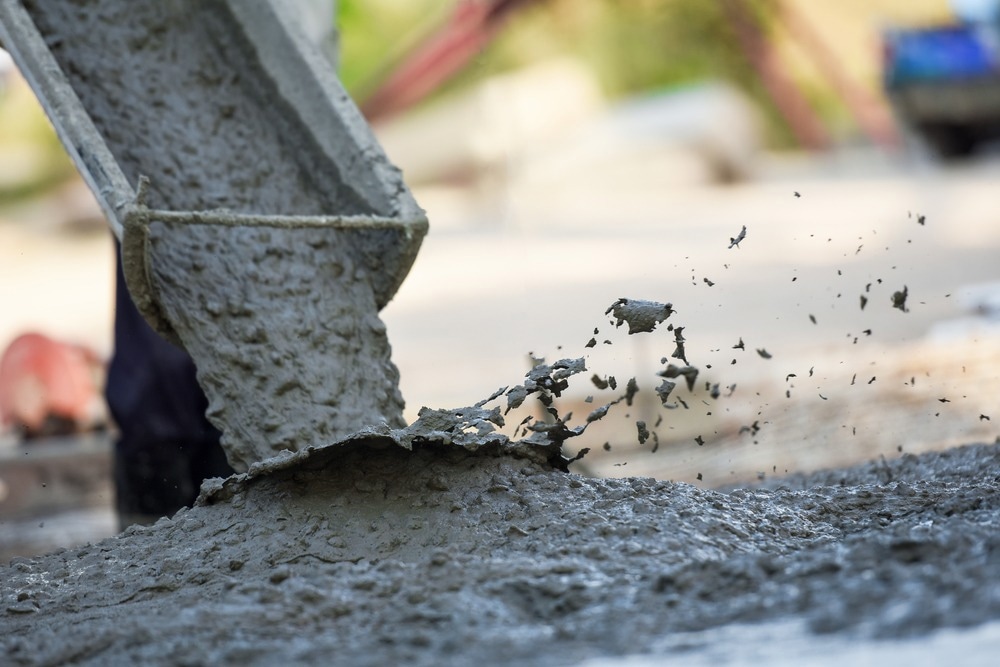Reinforcing lightweight foamed concrete (LFC) materials with plant fibers can make concrete a sustainable material. In an article recently published in the journal Materials, the researchers investigated the effect of the incorporation of lignocellulosic fibers on LFC performance.

Study: Durability Properties of Lightweight Foamed Concrete Reinforced with Lignocellulosic Fibers. Image Credit: Bannafarsai_Stock/Shutterstock.com
The team carried out this investigation with four different types of lignocellulosic plant fibers, and a total of 10 samples were tested in this study. Further, the durability parameters were screened to understand the effect of cellulosic plant fibers on LFC's properties.
Background
Existing research regarding concrete requires high-performance concrete with high durability and thermal and mechanical performances. To this end, the LFC possesses internally induced cracks and microcracks propagation leading to brittle fractions that results in poor tensile strength. Further, the structural cracks occur in LFC before loading mainly due to high drying shrinkage. The LFC mainly creates elastic deformation under stress and reciprocates the deformation change in an elastic state without any energy requirement.
Incorporating uniformly distributed and tightly spaced naturally available lignocellulosic fibers in LFC can prevent crack development, thus enhancing concrete's dynamic and static characteristics. The fiber-strengthened LFC improves their overall structural performance. Commonly used fibers include glass, steel, and carbon which promote high modulus and strength for structural functions.
About the Study
In the present study, the researchers investigated four types of lignocellulosic plant fibers, namely hemp, kenaf, ramie, and jute fibers. They prepared 10 mixes and tested the durability parameters, including porosity, water absorption capability, flowability, and ultrasonic pulse velocity (UPV).
Further, the LFC samples with a density of 700 and 1400 kg/m3 were prepared. The lignocellulosic plant fiber's weight fraction was kept at 0.45%. The results revealed that incorporating cellulosic plant fibers in LFC had a critical role in enhancing all the aforementioned durability parameters. The addition of ramie fiber resulted in the lowest slump, the incorporation of kenaf led to optimum UPV, and the inclusion of jute fiber resulted in porosity and water absorption.
Research Findings
Scanning electron microscope (SEM) images showed the porous morphology of LFC of varying sizes. The initial water absorption resulted in high porosity in LFC, which impacted the hydration rate. However, kenaf fiber-incorporated LFC showed smaller voids in the matrix with defined boundaries. Moreover, the kenaf fiber reinforced LFC specimen had no microcracks, which otherwise were observed in control LFC, suggesting that the presence of fibers alleviated and bridged the microcracks and prevented their further propagation.
On passing an ultrasonic pulse via LFC towards the cementitious paste, the fibers generate a tortuous route, resulting in an increased traversing time of the ultrasonic pulse. Adding natural fibers can modify the pore structure in foamed concrete, causing a decrease in LFC gel pores. Among the four natural lignocellulosic fibers considered for this study, kenaf fiber has the largest cross-section diameter of 198 µm followed by ramie, jute, and hemp fibers with 155, 121, and 75 µm, respectively. Thus, the larger the fiber's diameter, the better was the ultrasonic pulse velocity.
The team demonstrated the water absorption capacity of LFCs reinforced with different types of fibers. The results indicated that reinforcing LFC with jute fiber led to optimal water absorption at 22.15% and 11.2% for the densities of 700 and 1400 kg/m3, respectively. Followed by kenaf fiber, with 22.80% and 12.1% for 700 and 1400 kg/m3 densities. However, the water absorption capacity was highest in LFC reinforced with ramie fiber due to its chemical composition, that is, the high cellulose content.
Including different types of fiber in LFC reduced its porosity compared to the control LFC. The presence of natural fibers lessened the opening diameter and diminished the absorption capacity in LFC. Thus, the addition of these fibers is critical to reducing the porosity. Control LFC had the highest porosity, followed by ramie fiber and jute fiber.
Conclusion
In conclusion, adding jute fibers resulted in optimal workability that recorded a slump of 238 and 230 mm for 700 and 1400 kg/m3 densities, respectively. The lowest slump was recorded for ramie fiber incorporated LFC. The fiber cellulose content directly influenced the workability of LFC. The researchers observed that the cellulose content was lowest in jute fiber and highest in ramie fiber. Fiber with low cellulose content absorbed less free water.
The kenaf fiber incorporation resulted in ultrasonic pulse velocity (UPV), which logged the readings of 3025 and 1897 m/s for the densities of 700 and 1400 kg/m3. Among the four reported fibers of this study, the hemp fiber incorporated LFC recorded the lowest UPV reading of 2902 and 1695 m/s for densities of 1400 and 700 kg/m3 densities, respectively.
The UPV results were linked with the cross-section diameters of the fibers. The inclusion of jute fiber in LFC led to optimal porosity and water absorption. However, the presence of ramie fiber revealed the highest water absorption and porosity, which is unfavorable to LFC.
Disclaimer: The views expressed here are those of the author expressed in their private capacity and do not necessarily represent the views of AZoM.com Limited T/A AZoNetwork the owner and operator of this website. This disclaimer forms part of the Terms and conditions of use of this website.
Source:
Othuman Mydin MA, Mohd Nawi MN, Odeh RA, Salameh AA. (2022) Durability Properties of Lightweight Foamed Concrete Reinforced with Lignocellulosic Fibers. Materials. https://www.mdpi.com/1996-1944/15/12/4259